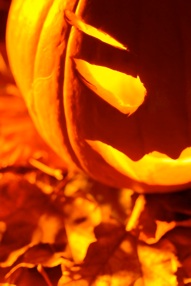The History of Halloween
Kendall Greene
Staff Writer

With Halloween quickly approaching, America’s second biggest consumer holiday absorbs its yearly time in the spotlight. While today’s Halloween traditions seem inherently American, many of Halloween’s traditions developed out of Celtic mysticism and ceremonies that were once believed to keep evil spirits away. Bonfires, dressing in ghostly costumes, and even Jack O’ Lanterns come from ancient traditions that kept Celtic homes safe from angry souls searching the Irish country side.
In ancient Ireland, the Celtic new year was on November 1st. The day before was believed to be the one day of the year that the world of the dead overlapped with the world of the living. The Celts believed that evil spirits were allowed to wander the country side, torment homes, and destroy crops. To ward off the spirits, it became tradition to light massive bonfires. Flames from the bonfires were carried into the homes of every Celt. These flames protected early Celts from wandering souls. This day before the new year was known as Salmhain.
Celts disguised themselves as evil spirits to protect themselves and their homes from real spirits of the grave. Wearing animal heads and dressing as ghosts was seen as a way to keep spirits from entering the home. The ghoulish disguises would scare away angry spirits.
The Catholics, true to form, decided to transform Salmhain from a pagan holiday by creating All Saints Day in 735. The Catholic church declared November 1st as the official day to honor martyrs and saints of the Church. All Saints day was also known as All Hallows Day. Despite Salmhain’s pagan heritage its traditions lived on, and the day before November 1st became known as All Hallows-Eve. Because of its incorporation into the expanding Catholic church, the traditions of Salmhain became more widely practiced than ever. Some traditions even grew out of the Catholic’s new holiday.
The tradition of trick-or-treating grew out of the All Souls Day, a day to remember deceased loved ones who were not yet welcomed into heaven. It was believed that a soul of a relative could be redeemed to heaven, through prayer. Every All Souls Day it was tradition to feed beggars in return for prayers for deceased family members. Eventually children took up the task of prayer in return for sweet “soul cakes”.
The tradition of carving pumpkins finds its roots in Irish legend. A man named Stingy Jack invites the devil to have a drink. Because Stingy Jack doesn’t want to pay the bartender he persuades the devil to turn into a coin to “pay” the bar owner. Jack decided to keep the coin instead and put it in his pocket. Because he had a silver cross in his pocket, the devil was stuck in coin form. Jack eventually freed the devil, under the condition that he would not bother Jack for one year and that, should Jack die, he would not claim his soul. The devil promised Jack not to collect his soul if he died in the next ten years. After more trickery Jack reached an agreement with the devil to prevent his soul from being collected if he died in the next ten years. Jack died before the ten years were up, so the devil kept his word, but God refused to allow such a corrupted soul into Heaven. Jack was forced to walk the earth, with only an ember from hell to light his path. Legend says that Jack placed the ember in a hollowed out turnip to use as a lantern. To ward off Jack’s evil spirit it became tradition to carve turnips or potatoes with Jack’s face. Creating Jack O’ Lanterns became a much more common practice as the legend of “Jack of the Lantern” grew. The tradition of carving pumpkins into scary faces didn’t begin until Colonial America times when immigrants discovered America’s vast supply of Pumpkins.
Since the spread of Halloween around the world, many more traditions have been added, and the holiday has taken on a much more playful tone. Trick-or-treat became common in America during the 1930’s. Halloween changed from being a serious holiday meant to keep away fiendish ghosts to a holiday where people enjoy the surreal life.